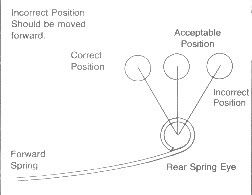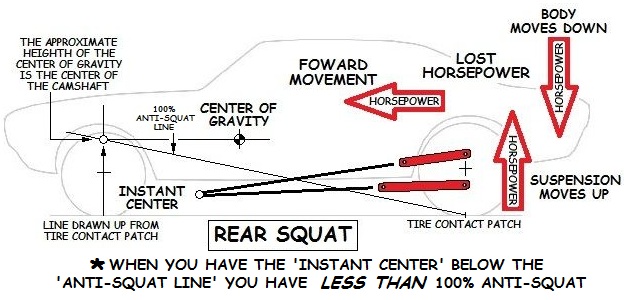Perhaps this will provide a better perspective:
* The bottom of the shackle (that is attached to the rear of the leaf spring eye) should be angled down, behind the vehicle. Basically, behind the upper eye mount.
...and a pic is worth a thousand words:
Thanks for the pic! That is the way I had thought the rear shackles need to be set up. I'm glad
I'm set up correctly.


















